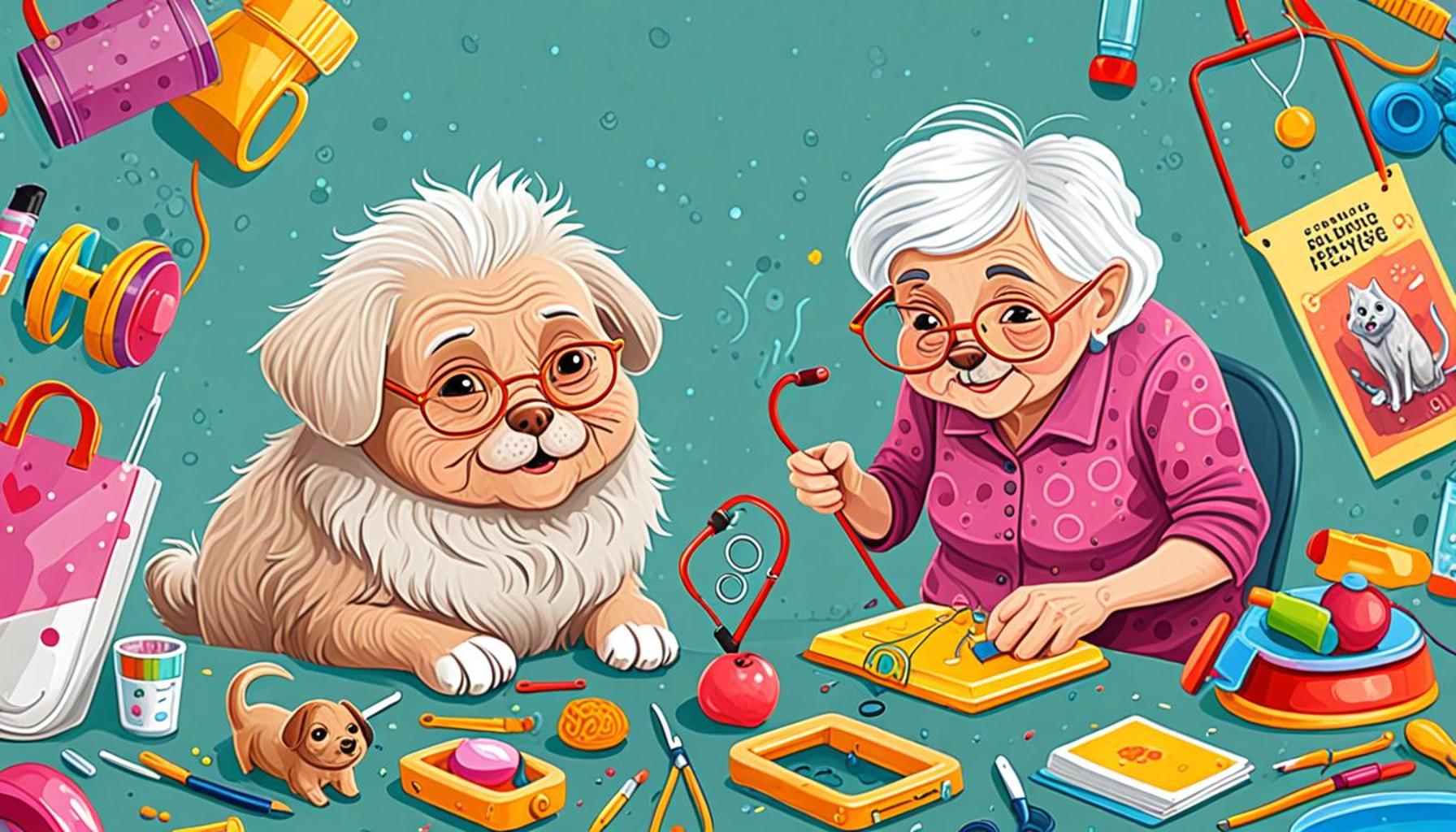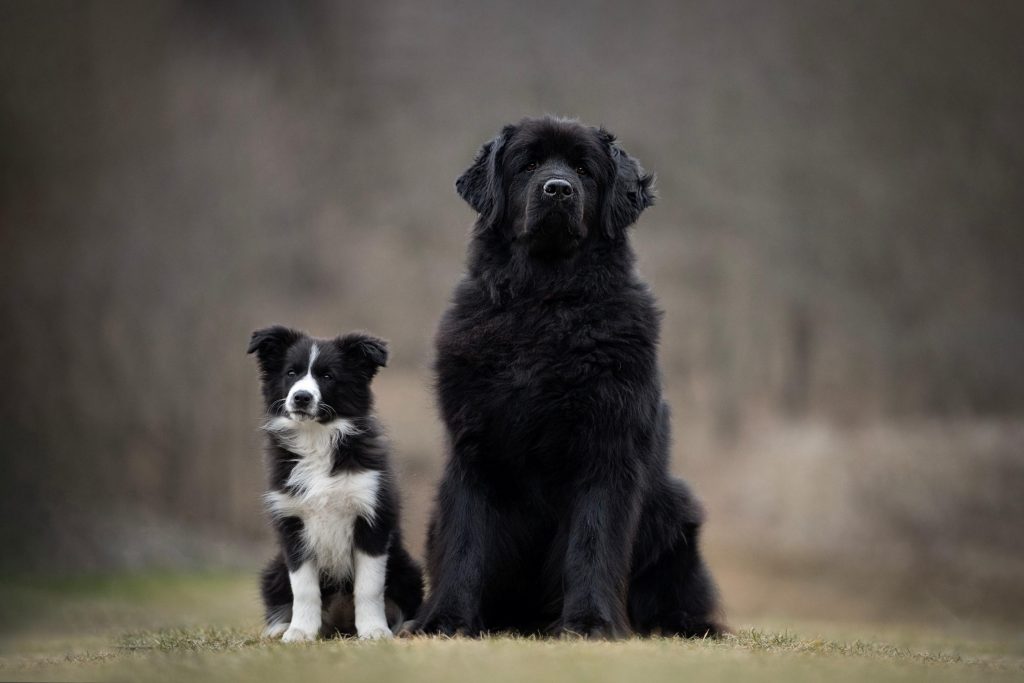Training Techniques for Senior Pets: Adapting Methods for Aging Companions

Understanding Senior Pet Training
Training a senior pet can be a rewarding yet challenging endeavor. As our furry companions age, their needs and abilities evolve, necessitating a thoughtful approach to training. Adapting methods to suit older pets emphasizes their wellbeing and enhances the bond between you and your beloved animal.
Why Adapt Training Techniques?
- Physical Limitations: Aging pets may struggle with mobility, making traditional training methods less effective. For instance, an older dog might find executing a sit command challenging if they have arthritis. As a pet owner, recognizing these limitations means you might want to offer alternative positions or commands that are easier for them.
- Cognitive Changes: Dementia or age-related cognitive decline can affect learning processes in senior pets. Conditions like canine cognitive dysfunction can lead to disorientation and confusion, making it imperative to adjust training techniques to be simple and repetitive to help reinforce memory.
- Health Conditions: Chronic pain or illnesses can hinder the ability to perform commands. If your pet has conditions like hip dysplasia, it’s essential to avoid putting them in uncomfortable positions during training. Instead, focus on low-impact activities that encourage mental engagement without physical strain.
By understanding these factors, pet owners can tailor their training strategies to meet the unique needs of senior animals. Here are some essential training techniques to consider:
- Positive Reinforcement: Reward-based approaches, such as offering low-calorie treats or verbal praise, are especially effective for fostering motivation. A senior pet may respond better to positive interactions, which can enrich their emotional environment and build trust.
- Short Training Sessions: Keep sessions brief to accommodate your pet’s attention span and energy levels. For example, instead of an hour-long session, try dividing training into several 5-10 minute intervals throughout the day. This can be far more effective and enjoyable for your aging companion.
- Gentle Guidance: Use calming tones and gentle body language to create a relaxed atmosphere. Your body language plays a critical role in communication. For example, kneeling down beside your pet when giving commands can help them feel more secure and connected.
Engaging in this adaptive training not only empowers your senior pets but also promotes mental stimulation and emotional security. Activities like puzzle toys or teaching simple tricks can provide essential brain exercise, helping your pet stay sharp. As you embark on this journey, remember that patience plays a crucial role in achieving success. Each small victory is a step towards a more fulfilling bond and, ultimately, a happier life for your senior pet.
As you navigate this path, consider reaching out to professional trainers who specialize in working with older animals. They can provide tailored advice and strategies that suit your specific situation, ensuring that the training journey is both effective and enjoyable for you and your cherished pet.
DIVE DEEPER: Click here to learn more about understanding your pet’s emotional needs

Essential Training Techniques for Senior Pets
When it comes to training senior pets, the key is to adapt techniques that cater to their evolving needs. The golden years can be filled with joy and companionship, but they also come with unique challenges that necessitate a fresh perspective on training methods. Pet owners must embrace a range of innovative techniques that not only promote learning but also ensure the safety and comfort of their aging companions.
Incorporating Engaging Activities
Beyond traditional commands and tricks, consider incorporating engaging activities that stimulate both the mind and the body of your senior pet. Here are several recommended exercises:
- Puzzle Toys: These toys are designed to challenge your pet’s brain. They can keep a senior pet mentally active, helping to stave off cognitive decline. Look for easy-to-use options that don’t require strenuous effort to manipulate.
- Gentle Obstacle Courses: Set up a simple course using low-impact objects, allowing your pet to navigate at their own pace. This helps improve coordination without causing undue stress or strain on their bodies.
- Interactive Games: Games like hide-and-seek with treats or gentle fetch can be fun ways to engage your senior pet without overexerting them. These activities also encourage your pet to use their senses, keeping their minds sharp.
Utilizing Visual Cues
As vision may decline with age, using visual cues can enhance your pet’s understanding of commands. Here are some effective methods:
- Hand Signals: Pair verbal commands with distinct hand signals; this can be particularly beneficial for pets with hearing loss. A simple raised hand can communicate ‘sit,’ while an outstretched palm might indicate ‘stay.’
- Light and Color: Utilize colored markers or lights to attract attention during training sessions. Bright colors can help grab a senior pet’s attention more effectively than muted shades.
- Consistent Visual Environment: Keeping the training environment consistent—whether it’s the same room or a designated area—can help eliminate distractions and make the learning process smoother for your aging pet.
By focusing on these adaptive training techniques, pet owners can create an enriching experience that aligns with their senior pet’s capabilities. It’s essential to remember that every pet is unique; simply observing your companion’s preferences and limitations can significantly inform your training approach. This process is not just about teaching commands, but also about nurturing a deep connection and understanding with your beloved pet as they navigate their golden years.
It’s important to remain observant of your pet’s reactions to different activities and techniques. Monitoring their comfort level and willingness to engage can aid in refining your approach. This careful attention not only aids in achieving successful results but also provides a platform for future enjoyment and bonding opportunities.
| Technique | Benefits |
|---|---|
| Positive Reinforcement | Encourages known behaviors, reducing anxiety and promoting a fun learning environment. |
| Short Training Sessions | Maintains focus and enthusiasm, accounting for senior pets’ limited attention spans. |
| Gentle Commands | Helps to communicate effectively with senior pets, as they may respond better to softer tones. |
| Reminder Cues | Aids memory retention, crucial for aging pets who may forget commands. |
The training techniques for senior pets are pivotal in ensuring their continued well-being and safety. Adapting these methods enables pet owners to connect with their companions in meaningful ways. For instance, utilizing positive reinforcement not only rewards good behavior but also fosters trust and happiness in aging animals. Additionally, implementing short training sessions allows for a more engaging experience, maximizing the effectiveness of each lesson while catering to their changing capabilities. Incorporating gentle commands is essential, as senior pets respond best to calm and soothing tones. Utilizing reminder cues can significantly enhance their memory retention, ensuring that they feel secure and placed within the training framework. Training does not just maintain skills; it promotes mental stimulation, thereby enriching their quality of life. Each technique outlined above can lead to a more fulfilling bond between you and your senior pet, making their twilight years truly rewarding.
DISCOVER MORE: Click here for helpful tips on finding the perfect shelter to adopt a pet</p
Fostering Positive Reinforcement
When engaging in training senior pets, employing a strategy of positive reinforcement can yield remarkable results. This approach focuses on rewarding desired behaviors, creating a more motivating environment for your aging companion. As pets grow older, their motivations may shift, making it crucial to identify what resonates best with them. Here’s how to effectively implement positive reinforcement:
Find the Right Rewards
Identifying suitable rewards for your senior pet is fundamental. Older pets may become less food-driven, so consider incorporating diverse incentives:
- Favorite Treats: Experiment with high-value treats that your pet loves, like miniature pieces of cooked chicken or specially designed soft treats for seniors.
- Affection and Praise: Combine verbal praise, gentle petting, and cuddles as rewards. Many older pets appreciate emotional connections over edible prizes.
- Toys and Playtime: For pets that enjoy play, incorporating a favorite toy for games or brief play sessions can reinforce positive behavior. Selecting toys that are gentle on their aging bodies is also key.
Short and Sweet Sessions
With age, pets may have shorter attention spans or become easily fatigued. Keeping training sessions short and engaging ensures your pet remains interested and receptive:
- Five-Minute Sessions: Aim to limit training sessions to around five minutes. Frequent, brief practices are less overwhelming and still provide valuable learning experiences.
- Break Time: Allow ample breaks during training. Understand when your pet needs to rest and let them dictate the pace of each session.
- Gradual Learning: Instead of overwhelming your pet with multiple new commands at once, focus on one skill until they master it. Gradual learning reinforces their confidence and competence.
Building Consistency and Routine
Establishing a consistent training routine will help your senior pet feel secure and understand your expectations better. Here’s how to create that structure:
- Set a Training Schedule: Choose a specific time each day for training to create a predictable routine. This helps your pet anticipate and prepare for learning.
- Use Clear Commands: Consistently use the same words and tone for each command. This clarity aids in their understanding and reduces confusion.
- Track Progress: Keep notes on the skills each pet is learning, noting their successes and any areas needing improvement. Use this data to adjust training methods and remain patient.
Senior pets often face challenges such as decreased mobility, cognitive decline, and hearing or vision impairments. When training, highlighting patience and empathy is crucial. By establishing a routine that caters to their pace and preferences, you significantly enhance your relationship with your aging furry friend. Through innovative reforms to your training approach, you not only foster learning but also provide enrichment and joy for your beloved companion during their golden years, paving the way for a harmonious transition as they age gracefully.
DISCOVER MORE: Click here for effective dog training techniques
Conclusion
In conclusion, the journey of adapting training techniques for senior pets is an exploration of mutual respect, understanding, and companionship. As our beloved furry friends age, they require a unique approach to learning that honors their physical limitations and emotional needs. By embracing positive reinforcement as a foundational strategy, pet owners can create an enriching environment where senior pets feel valued and motivated. Recognizing that short, engaging training sessions can foster a sense of accomplishment is vital; this approach respects their decreased attention spans while laying the groundwork for successful learning experiences.
Building a consistent routine not only cultivates security for your aging pet but also strengthens the bond between you. Utilizing clear commands and purposeful rewards tailored to their preferences turns training into an enjoyable session rather than a chore. This dynamic, based on patience and empathy, enhances not just your pet’s learning curve but also contributes to their overall well-being.
As we navigate these important years in our pets’ lives, it’s essential to consider their unique challenges, such as mobility issues and cognitive changes. Ensuring that training remains a source of joy, rather than frustration, allows for a deeper connection in these golden years. By adopting the right techniques, pet owners can transform training into a mutually beneficial and enjoyable experience, paving the way for a fulfilling companionship that honors the rich history you share. As you embark on this rewarding endeavor, remember that love, patience, and adaptation are your greatest tools in ensuring your senior pet thrives.


